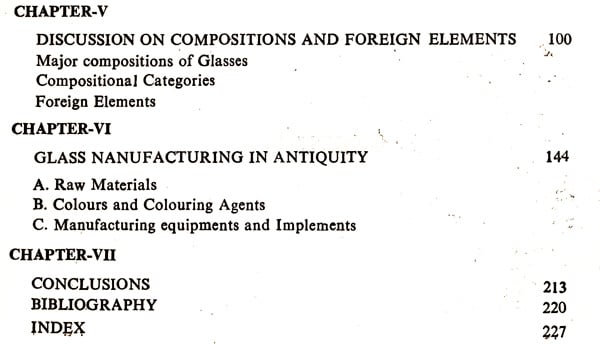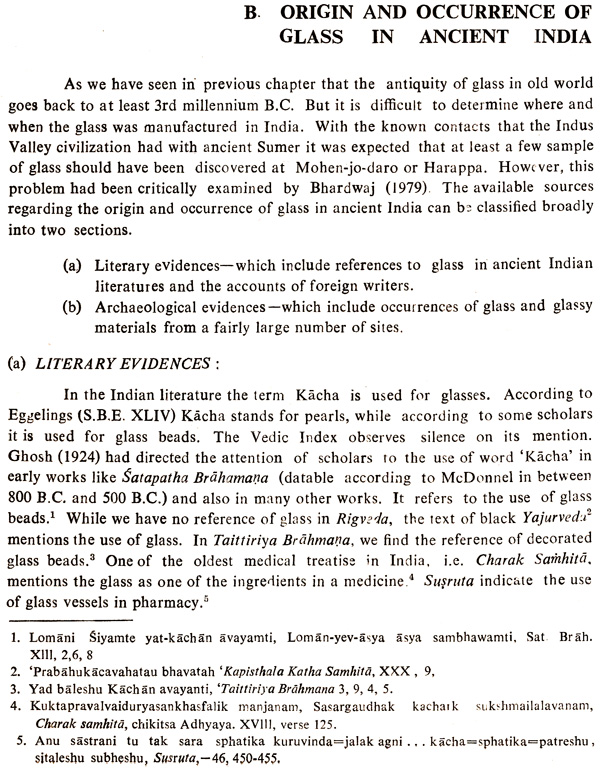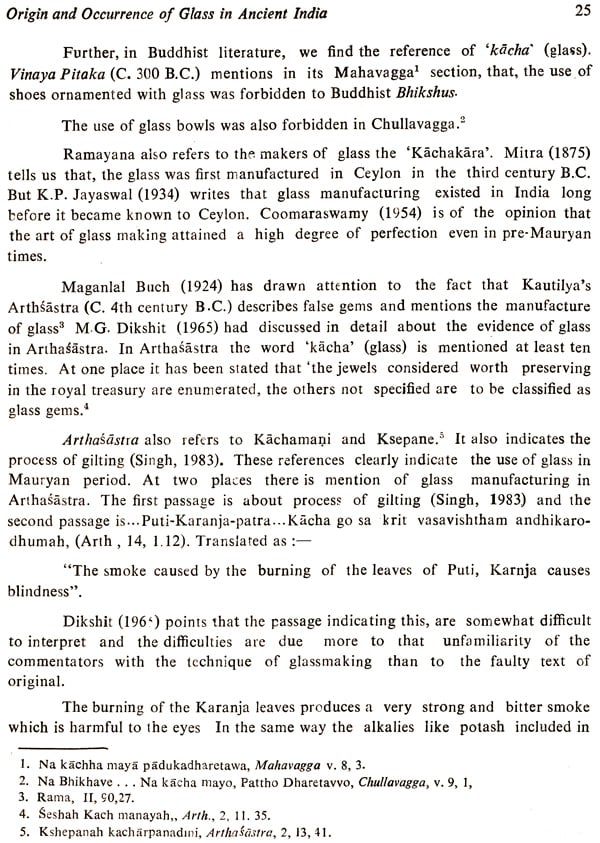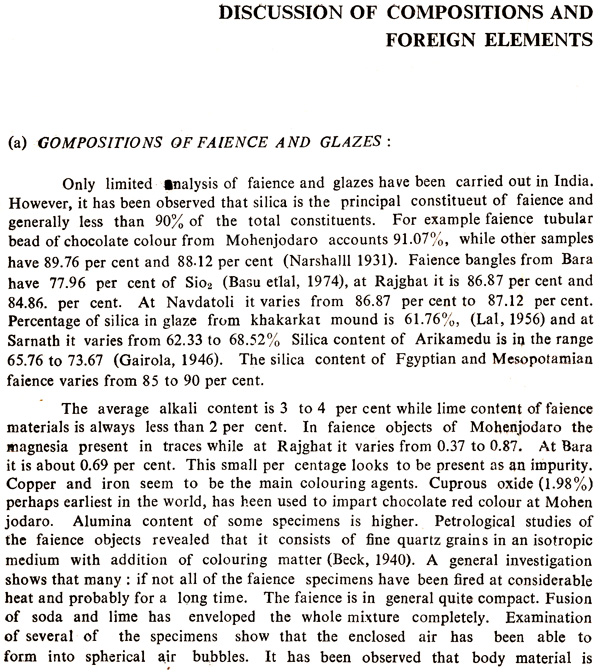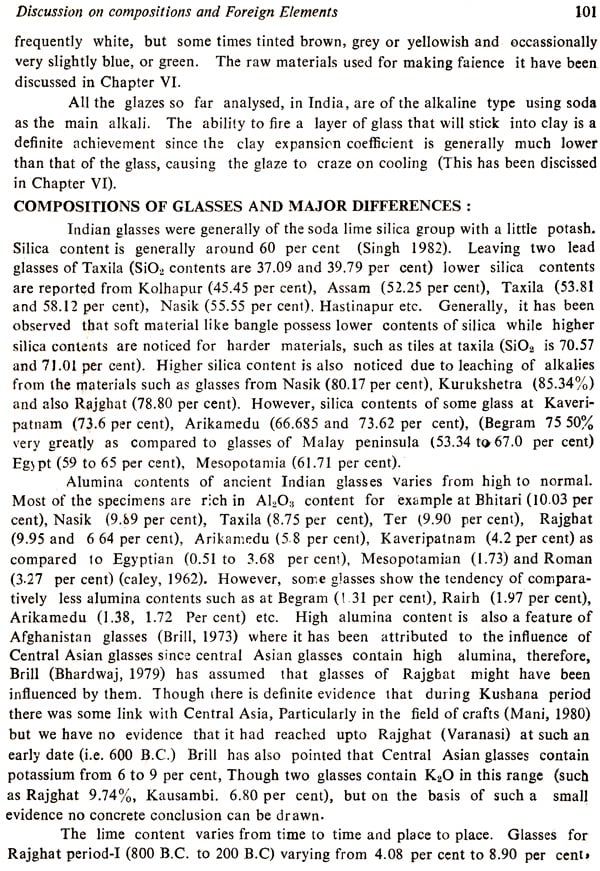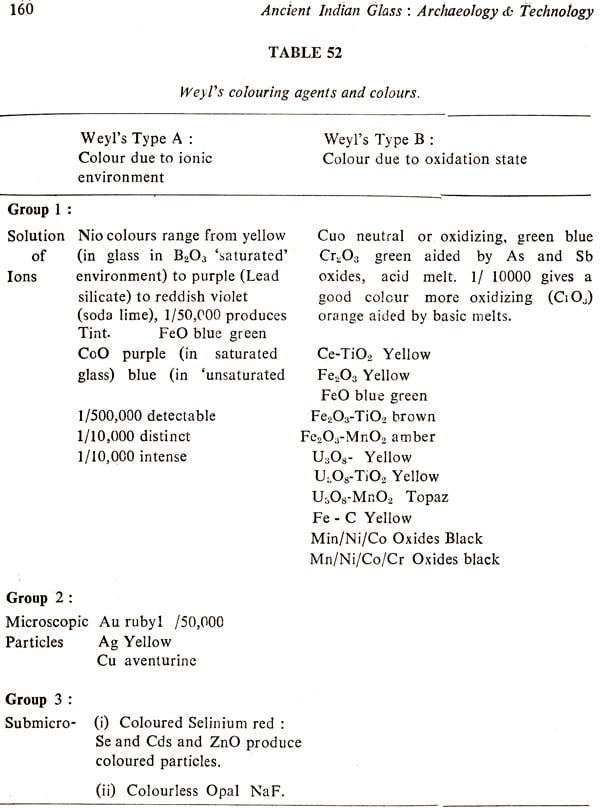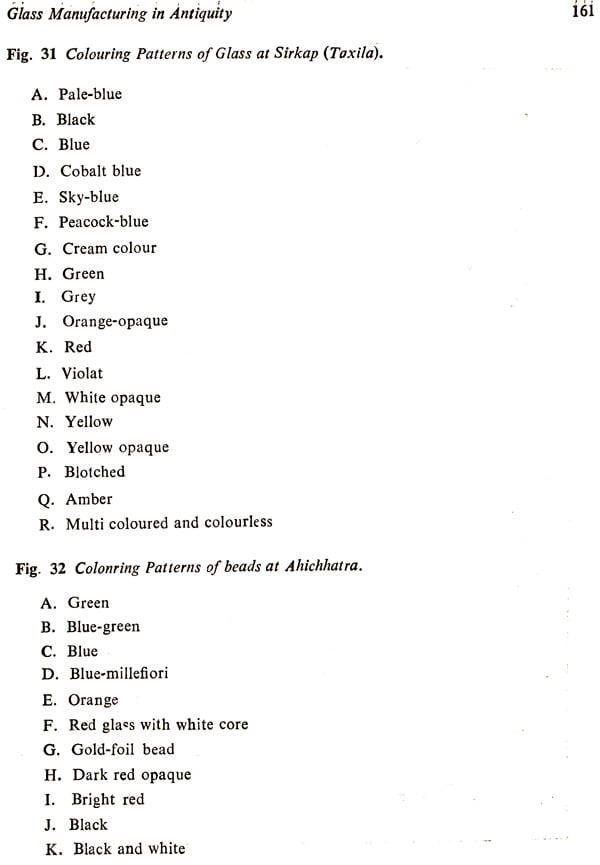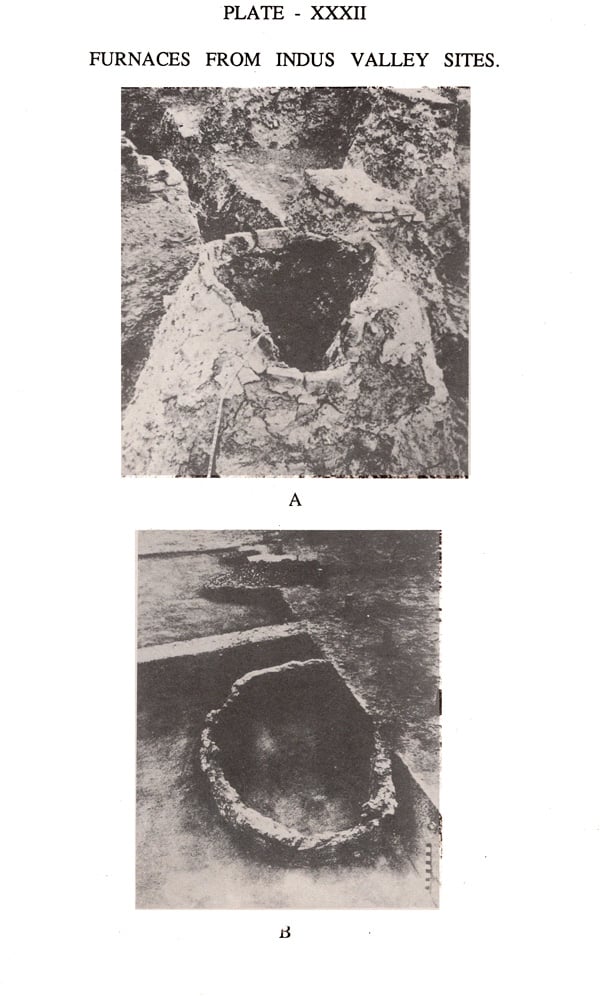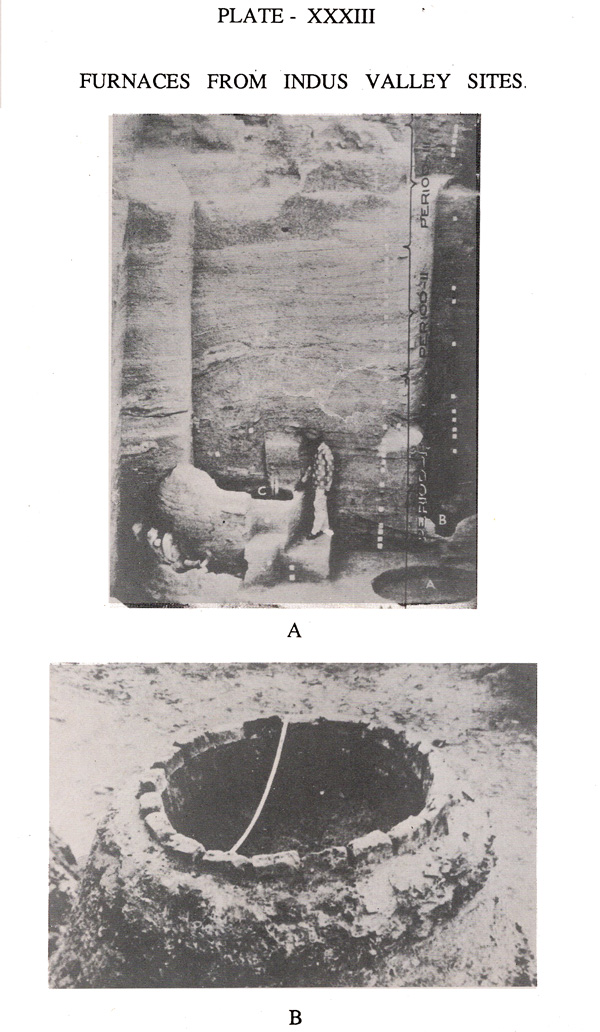
Ancient Indian Glass - Archaeology and Technology (An Old and Rare Book)
Book Specification
| Item Code: | NAR514 |
| Author: | Ravindra N. Singh |
| Publisher: | Parimal Publication Pvt. Ltd. |
| Language: | English |
| Edition: | 1989 |
| ISBN: | 8171100902 |
| Pages: | 296 (72 B/W Illustrations) |
| Cover: | HARDCOVER |
| Other Details | 10.00 X 7.50 inch |
| Weight | 720 gm |
Book Description
This is a work scientifically planned and meticulously executed. Containing considerable detailed description, this systematic, comprehensive work on archaeology and technology of ancient Indian glasses is also the first work to trace the fascinating panorama of the Indian glasses from the very origins. Writing with authority and enthusiasm, Dr. R.N. Singh offers a new and a total perspective of glass technology in India to know more about a neglected aspect of archaeological study, this unique contribution will be as interesting to read as it is an invaluable guide for future research.
This book is written by a specialist in glass studies for archaeologists working in many different periods from pre-history to the pre-medieval. It introduces a scientific approach to the study of glass within archaeology.
Dr. Ravindra N. Singh (b. 1956) is a science graduate with his M.A. and Ph.D. in A.I.H.C. and Archaeology from Banaras Hindu University.
Dr. Singh an archaeologist by profession working as Technical officer to Archaeology in Banaras Hindu University. In 1981 during his research he has been invited to attend International Congress of History of Science, held at Bucharest, Romania. Since then Dr. Singh has participated in various Inter-national Conferences held in U.S.A., Canada, U.K., France etc. He has been awarded U.G.C. fellowship under Indo-Soviet Cultural Exchange programme to visit Moscow for a year. He has a number of research paper to his credit published in national and International journals.
Scientific and Technological studies of Archaeological artefacts in India are still in its infancy. Today Archaeology has to do as much with Physics, Chemistry, Ceramics and Glass Technology, Metallurgy as with Numismatics, Palaeography, etc.
During the past few years a large number of studies have been made on ancient glasses and ceramic materials from archaeological excavations from many parts of the world. This has resulted in the reconstruction of glass technology in ancient civilizations of Mesopotamia, Egypt etc. In India, no in-depth archaeo-technological study of glasses has been attempted so far.
It was in this context that a few years back, Dr. H.C. Bhardwaj, Reader in History of science and Technology asked to take up the study of ancient Indian Glass Technology.
There have been many difficulties in accomplishing this work. The work needed multidisciplinary approach involving Archaeology, Chemistry, Spectroscopy, Glass and Ceramic Technology and physical and microscopic methods, my being a graduate in Chemistry was of great help to take up analytical studies and interpret the science data. My training and experience at the Archaeological laboratory of the department, as well as, the laboratories of Spectroscopy and Geology Department of Banaras Hindu University, were of great help in taking up this work. My visit to the laboratories of Archaeological Survey of India Dehradun, International Centre for Conservation of Cultural Property Rome and Central Institute of Restoration Rome, broadened my vision in understanding and appreciating the scores of methods and techniques of investigations of glasses.
The work was also facilitated through the kind help and guidance of various scientists and scholars in India and abroad. My visit to various museums in India and UK, France and other European countries also helped me to grasp the various technicalities of glass manufacture and fabrication.
For the purpose of this study, we have tried our best to take into account most of the available archaeological data from the excavation reports and the reviews of Indian Archaeology. In addition to our analytical and scientific investigations, we have taken into account most of the available analytical data on the ancient Indian Glasses and have tried to knit a coherent picture by combining the various strands. Wherever, relevant, we have compared the Indian Glass Technology with that of the Old world. The study reveals the advancement made by early Indian craftsmen in the field of Glass Technology. The work brings to light the chemical composition, probable sources of materials, use of different batch materials, of the pacifiers used by Indian craftsmen. Evidence of the early furnaces and crucible used for making glass has also been pieced together.
Glass is one of the most ubiquitous materials of modern technology. It is a commonplace household article in everyday use, Familiarity and long association with this material ordinarily does not evoke any interest amongst us regarding its origin. Transparency, brilliance, decorative qualities, the easiness with which it can be moulded into different fancy shapes and above all its cheapness have contributed to a great extent to the increasing use of glass in the modern world, but it is scarcely remembered that in order to attain this distinction, this fragile material had to go a long way through research and experimentation after its discovery It is thus natural for both the technologist as well as archaeologist to know about the origin and development of glass since prehistoric period.
The work is an attempt to understand, describe and interpret the development of glass technology in Indian archaeology in the background of such developments in old world. The development of any technical methods is the result of a collective experience constantly being accumulated.
Before 7000 B.C. the people of Cayonu Tepesi were not only acquainted with metal but also were shaping artefacts out of native copper by abrading and hammering.
Metallurgy involves the hot working of metals including such arts as smelting, alloying, casting, forging. Ochre used in funerary practices, cave paintings, finds of rouge and eye shadow show crushing of haematite, galena and malachite before 6000 B.C.
In Catal Huyuk (6000-5500 B.C.) we find use of copper tubes, and in 5000-4500 B.C., we find first metal hoards in Anatolia and Iran showing use of hammered and annealed copper and in 4000 B.C., we find smelting of copper, lead and silver.
Badarian glazes in Egypt bring together crushed ores and alkalies in closed chambers at 850°C and the development of glass technology follows.
The excavations have brought to light a rich material heritage in the form of antiquities, the products of various industries and crafts from various archaeological sites in different regions of India. Among them, glass is a composite material which could be made by adding various ingredients in correct proportion. This needs a positive advancement in technology, knowledge of dynamics of temperature, much above the smelting of metals. Though the glass objects are common feature but they have been traditionally neglected by the archaeologists. Often archaeologists have recorded the glass specimens without any reference to the mode of fabrication. Only shapes and colours of glass objects have been found worthy of their notice.
These specimens need sustained efforts of the scientists to study them in detail. These studies which are a great desideratum can throw welcome light on the ancient Indian glass technology, chemical and scientific practices, origin and development and their archaeological significance. It is through the systematic knowledge of these glass objects that we reconstruct an aspect of the ancient technology. Various studies of the occidental glasses have been made to elucidate their origin, composition, method of production and fabrication, and also the determination of probable raw materials. It is in this connection that natural sciences with score of scientific theories and experimental procedure with special reference to analytical chemistry (Heiger and Cook, 1960), microscopic examinations (Tite, et al, 1983) and silicate technology are being utilized for the solution of various archaeo-technological problems. In order to understand the technology of glass it is logical to discuss some characteristics of glass as a material.
A. DEFINITION OF GLASS AND ITS NATURE:
There is technical debate as to what glass really is and what constitutes the molecular basis of its properties. However, several scholars have tried to define this material.
Solids can be classified into two groups: Crystalline and Amorphous. In crystals the constituent atoms are locked into symmetrical and repeating patterns. Crystals have a sharp melting point and tend to cleave in preferred directions; amorphous solids show none of these properties. The glassy state is sub-category of the amorphous state. The term glass refers to amorphous solids that may be melted to viscous liquids by heating and then converted again to the solid state by cooling without crystallization. While many substances, both inorganic and organic. will pass into the glassy state, the term glass itself is commonly applied only to inorganic solids (Greene, 1961).
Within three states of matter (Solids, Liquids, and Gasses) there is no place for glasses.
**Contents and Sample Pages**

